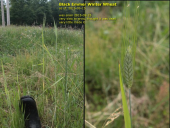
 3
3




Education: EAT Project * GROW
Projects: Keyhole-Hugel - Engine MOD
 2
2




Education: EAT Project * GROW
Projects: Keyhole-Hugel - Engine MOD
 2
2




Education: EAT Project * GROW
Projects: Keyhole-Hugel - Engine MOD




 1
1




Permaculture and Homestead Blogging on the Traditional Catholic Homestead in Idaho! Jump to popular topics here: Propagating Morels!, Continuous Brew Kombucha!, and The Perfect Homestead Cow!




"What is worth knowing, is difficult to learn"
 1
1




It places minimal demands on the soil and is sowed around Johannis Day (24 June). The young cereal plants are subsequently grazed (or also mowed) which promotes stocking. After stocking, the plants develop over winter and then form heads relatively early in spring.
Permaculture market farming, plant breeding and perennial grains: http://jasonpadvorac.com
 1
1




Education: EAT Project * GROW
Projects: Keyhole-Hugel - Engine MOD




Jason Vath wrote:I have received a small amount of Sepp's semi perennial Russian rye. I planted it on Sept. 25th 2015 on a poor soil, compacted hill side.
Here's a photo diary of the progress. I'm somewhat new to grain so I don't know when is best to harvest seed but, since the stalks look and feel completely dead & dry, I'm assuming now(probably earlier) is the time to cut & store the seeds.
Please give me some advice.
Unfortunately I didn't learn till too late that I could cut it prior to seed head formation in order to get a grass harvest from it & to stimulate more vigorous growth in the same season.




Education: EAT Project * GROW
Projects: Keyhole-Hugel - Engine MOD

|
pizza for tiny ad? tiny ad? Did you order a pizza?
The new kickstarter is now live!
https://www.kickstarter.com/projects/paulwheaton/garden-cards
|




